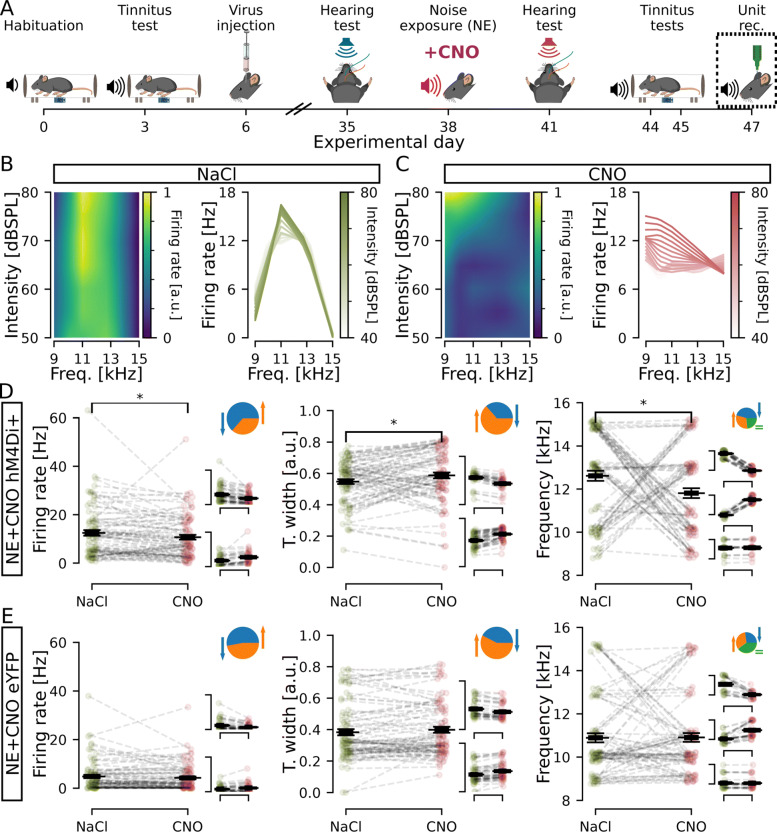Fig. 6.
Decreasing activity of CaMKII α-hM4Di-positive DCN cells that were also inhibited during noise exposure changes firing properties of the circuitry. A Timeline of experiments highlighting the unit recordings. B–C Left, normalized firing rate (colormap) of a representative unit after NaCl (B) and CNO (C) injection for each intensity (lines) and each frequency (columns) tested. Right, a different representation of the same representative examples in the left, showing firing rate per frequency for each intensity. D, E Units firing rate (left), tuning width (middle), and best frequency (right) for stimulation at 80dBSPL, at each unit best frequency in the 8–16kHz interval. D Units from mice expressing hM4Di, showing significant difference after CNO application for firing rate, tuning width, and best frequency. Individual unit values are shown in olive (NaCl) or red (CNO) condition. Black line indicates the mean ± SEM. E Units from mice expressing eYFP showing no significant difference for any of the parameters. Insets show the proportion of units decreasing (blue), increasing (orange) or not changing (green) parameters of each graph (see Additional file 2: Fig. S2 for greater detail). n = 6 and 6 mice, 85 and 91 units, for NE+CNO hM4Di+ and NE+CNO eYFP; *p <0.05

